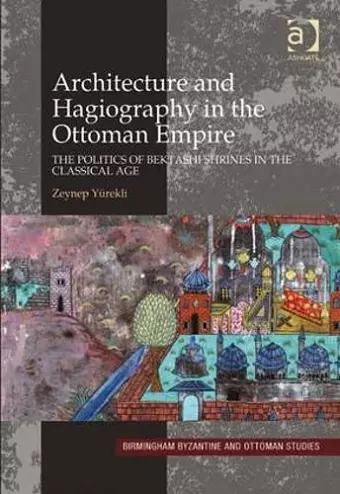Architecture and Hagiography in the Ottoman Empire
The Politics of Bektashi Shrines in the Classical Age
Format:Hardback
Publisher:Taylor & Francis Ltd
Published:21st Nov '12
Currently unavailable, and unfortunately no date known when it will be back
This hardback is available in another edition too:
- Paperback£56.99(9781138270756)

Based on a thorough examination of buildings, inscriptions, archival documents and hagiographies, this book uncovers the political significance of Bektashi shrines in the Ottoman imperial age. It thus provides a fresh and comprehensive account of the formative process of the Bektashi order, which started out as a network of social groups that took issue with Ottoman imperial policies in the late fifteenth century, was endorsed imperially as part of Bayezid II's (r. 1481-1512) soft power policy, and was kept in check by imperial authorities as the Ottoman approach to the Safavid conflict hardened during the rest of the sixteenth century. This book demonstrates that it was a combination of two collective activities that established the primary parameters of Bektashi culture from the late fifteenth century onwards. One was the writing of Bektashi hagiographies; they linked hitherto distinct social groups (such as wandering dervishes and warriors) with each other through the lives of historical figures who were their patron saints, idols and identity markers (such as the saint Hacı Bektaş and the martyr Seyyid Gazi), while incorporating them into Ottoman history in creative ways. The other one was the architectural remodelling of the saints' shrines. In terms of style, imagery and content, this interrelated literary and architectural output reveals a complicated process of negotiation with the imperial order and its cultural paradigms. Examined in more detail in the book are the shrines of Seyyid Gazi and Hacı Bektaş and associated legends and hagiographies. Though established as independent institutions in medieval Anatolia, they were joined in the emerging Bektashi network under the Ottomans, became its principal centres and underwent radical architectural transformation, mainly under the patronage of raider commanders based in the Balkans. In the process, they thus came to occupy an intermediary socio-political zone between the Ottoman empire and its contestants in the sixteenth century.
'... an excellent example of a recent trend in Ottoman history toward scholarship so interdisciplinary as to defy easy categorisation. While the author is primarily a historian of art and architecture, her book is equally about religion, politics, social networks and historical narrative. The result is greater than the sum of its parts and represents a welcome step forward in the ongoing process of maturation that has been taking place in the field of Ottoman studies.' English Historical Review
'... a lavishly illustrated study of the heterodox groups of early Ottoman Anatolia and their shrines.' Renaissance Quarterly
’Yutekli’s approach to architecture and hagiography as interdependent projects of both religious and political nature has long been warranted. Also noteworthy is the author’s success in binding together in an engaging, appealing, informative, and insightful manner architectural analysis and the study of the written record. This book also shows that the meticulous study of architecture and inscriptions does not dispense with the historian’s commitment to source criticism of the textual record.’ Der Islam
'Architecture and Hagiography in the Ottoman Empire is an in-depth look at how the shrines of Seyyid Gazi and Haci Bektas, and their communities, functioned within a social, political, and architectural context. ... This insightful book is critical for libraries, architectural historians, early modernists, and scholars alike because it effectively demystifies architecture during the Ottoman period, in ways that will have references to many areas of study.' Sixteenth Century Journal
ISBN: 9781409411062
Dimensions: unknown
Weight: 703g
222 pages